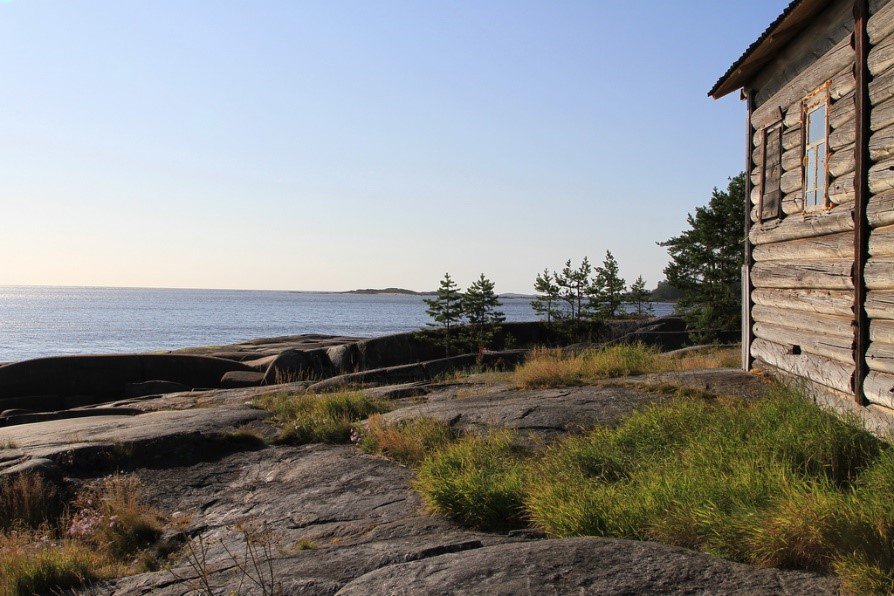 Kiy Island
Kiy IslandOnega is a small northern town. In ancient times there was a Pogost at sea. This was the name of this place in the Charter of 1137 of the Novgorod prince Svyatoslav Olgovich. Catherine the Second arrived in a settlement on the sea and saw the amazing beauty of nature, and nights which are whiter than St. Petersburg - they are transparent. Well, when she saw the sunset on the White Sea, she said "Oh, Nega!," So the name “Onega” happened. Even before the founding of St. Petersburg in Onega there was a lively trade. In the 18th century, with the opening of a trade route along the Neva and Peter I's broken "window" to Europe, trade through the port of Onega declined and revived again when woodworkers began to sell their products for export. Peter the Great opened the window to Europe, but slammed the window, that is, the northern path through Arkhangelsk, Solovki and Onega.
 Kiy Island
Kiy IslandKiy is a small, pine-covered picturesque stone island in the White Sea near the mouth of the Onega River. White Sea sunsets, fish-rich coastal waters, granite grey rocks, sandy beaches and magnificent pine forests, an unusually interesting architectural ensemble and the history of the Kia Cross Monastery are the highlights of the day. Boats to the island take off from Onega town. It takes about 40 minutes by boats to reach the island in the Onega Bay of the White Sea. The island is a natural ledge of a large stone slab emerging from the sea. The height of individual rocks reaches 25 m above sea level. The length of the island is only 2 km, and the width is 800 m, but the beauty of this wonderful piece of land goes beyond saying. The history of Kiy Island is closely connected with the name of the famous religious figure of the 17th century and the reformer of the Russian Orthodox Church - Patriarch Nikon. Legend has it that Nikon, caught in a storm, took refuge on the island. In memory of salvation, he founded the Holy Monastery here - one of the three monasteries, which were the stronghold of his power and the guides of the ideas of church reform. The Holy Cross Exaltation Cathedral, the Overlord Church with stone cells adjacent to it, the two-tier Church of the Nativity of the Virgin with a refectory and Kelar chambers have survived to this day. Some of the building have no analogues in the Russian North.
 Anzodero village
Anzodero villageReturn to Onega and drive to Andozero village, 10 km away from the town for traditional lunch. Pies from the Russian stove, old dishes of Russian cuisine, cooked on coals in cast iron, will make unforgettable impressions of the antiquity of the true Russian village and the color of the Andozersky hut! Photo shoot in the Russian house. After lunch, try yourself in traditional arts: master classes in the manufacture of folk dolls, dolls - overtaking from straw, or on creating paintings from birch bark, master classes in wallowing, souvenir – famous Russian “valenki”